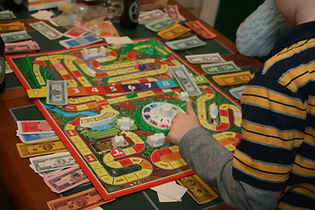Backwards
Design

Learning designers begin with the end in mind.
Backwards Design comes from McTighe & Wiggins’ (2005) Understanding by Design which tasks us to first, identify the 'what' we want our learners to know (objectives); second, determine 'how' will we will know they know (assessments); and third, how will we get there (content/activities).
"It is the main distinction between learning design practice and traditional classroom based teaching." -Karen Caldwell
Example

I've been thinking about the following scenario as a way to illustrate the significance, thus impact of backwards design. Follow along to see if you agree.
Think for a moment: what is the first thing you learn when you begin to learn how to play a new game?
Answer: well it is to find out the object of the game. (Are you LD senses going off? object = root for objective??)
Now let's use a common game nearly everyone is familiar, say the Game of Life. In the first 30 seconds of an instructional video on how to play the Game of Life, the narrator explains "the object is to be the player with the most money at the end".
There we have it! Already in our mind's eye, we can envision the player with a big pile of funny money in front of them and them gleaming with pride as they sit in the winner's circle. The object has been achieved!
But HOW? How did the player get to the winner's circle? Surely they needed to access skills that led to their success. Can you think of some example skills? Could they be things like:
-
How to make money?
-
How to save money?
-
How to count money?
-
How to protect money?
-
How to organize money?
To continue this analogy a little longer: to help the player achieve the large end goal, they would first need to be able to perform the sub items above. Once we know they can perform those items, we know they have the skills needed to meet the overall object. We will know they can perform those items by creating ways for us to measure their ability, this comes as assessments. Once the player successfully completes the assessments for the subtasks, they are ready to take on life-like scenarios that allows them to put the parts of what they've learned together in order to perform successfully at the main object(ive) of the game.
Of course this is an oversimplified example, but I think it does the trick to explain the importance of knowing where you want learners to be when they complete the experience and then design the pathway needed to get them there.
Your turn: How about you? Can you think of other examples of where we start with the end, and figure out the parts necessary to get us there?